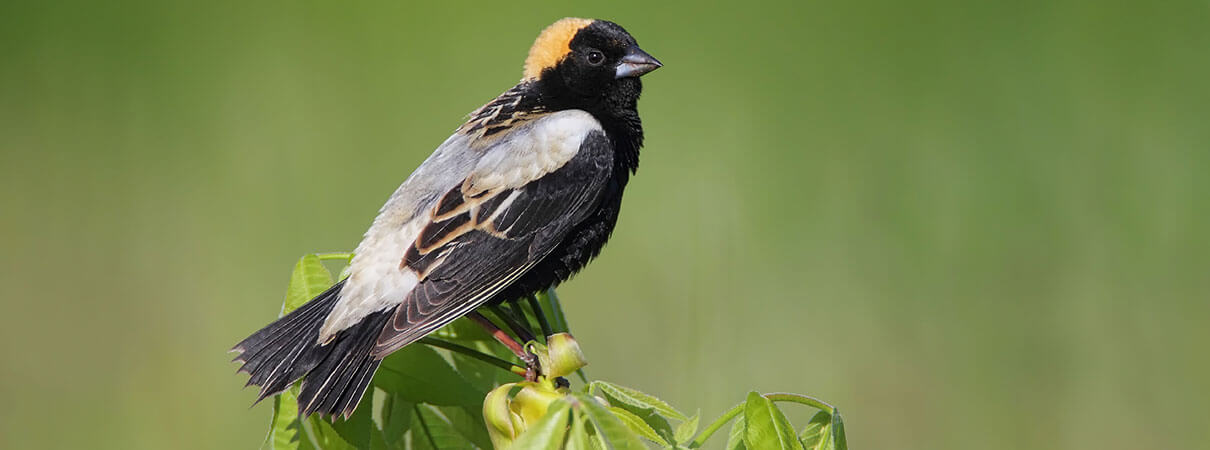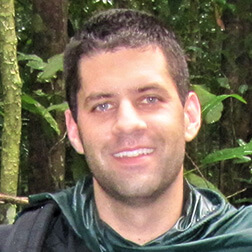The Real Neonics Threat to Birds isn't From Wild Bird Seed
When the Pittsburgh Post-Gazette ran a story (“Is your bird seed harmful to the birds and bees?”) on April 26, warning that wild bird seed could be contaminated with neonicotinoid pesticides, commonly known as “neonics,” readers with bird feeders were likely shocked to think they might be harming backyard visitors.
For the time being, however, we can breathe a sigh of relief. American Bird Conservancy has no evidence that commercially available wild bird seed directly exposes birds to neonic-coated seeds. If it did, we would expect dead and sick birds to litter backyards, as even minimal direct exposure to these pesticides is detrimental to birds.

The Bobolink's population decline may be linked in part to the prevalence of insecticides, including neonics, on agricultural crops. Photo by Dan Behm
Beyond Bird Seed: Neonics' Threats to Birds – and Humans
Although neonics are the most widely-used class of pesticides in the U.S., their long-term impact on the environment remains a troubling question that has yet to be resolved. In the meantime, there is already growing concern that exposure to these pesticides may cause insect declines and bird mortality. There are three ways in which this can happen.
The first is direct exposure. Direct exposure occurs when birds eat neonic-coated seeds sowed in agricultural fields or back yards. This type of contact can kill birds, impair their navigational abilities, or cause other significant injuries.
Secondly, neonics indirectly affect birds by reducing their food supply, namely insects. Even nontarget insects can be affected, since neonics are water soluble and persist in soil, creating lots of opportunities for fatal exposure. Consequently, birds and pollinators that play important roles in agriculture and ecosystem health are losing a critical food source.
Finally, neonics enter birds' bodies, and those of all animals, including humans, when they are consumed in residual levels in drinking water and produce. In the case of produce, neonics lodge within plant tissue – they cannot be washed off – and are present at low levels in many conventionally grown fruits and vegetables in the United States.
Avoiding neonics in the U.S. is practically impossible. During a recent study, researchers found at least one type of neonic pesticide in 63 percent of 48 U.S. streams. Another study, conducted in Iowa City, detected at least one neonic in 100 percent of the drinking water samples tested.
The effects of residual exposure to neonics has not yet been studied in birds. Although not as dangerous as direct exposure, this kind of exposure is not without risk. As noted above, the long-term effects of neonics remain unknown.

By harming pollinators and natural pest control agents such as birds, neonics harm the species on which farmers depend. Photo by Tim Zurowski/Shutterstock
Ensuring Safe Bird Seed
Even though residual neonic exposure through backyard bird seed is not a primary concern, ABC would still like to see wild bird seed distributors work to ensure that their seed does not come from crops grown from neonic-treated seeds. This would lessen the threat of direct exposure to birds and other wildlife in farm fields, while reassuring customers that the bird seed they buy is free of neonics.
Ironically, making certain that bird seed does not contain residual neonics would require the federal government to impose a higher safety standard on bird seed than it currently does on human food and drinking water.
Take Action
If you find any of this unsettling, please take a minute and ask Congress to advance the Save America's Pollinators Act, which would suspend the four most toxic neonics until a comprehensive study of their effects on wildlife and people is completed.
For more information, check out our reports on neonics in Congressional Dining Hall food and neonics' impacts on birds. Additionally, you can visit our neonics web page and our pesticides program page.
 Dr. Bryan Lenz is ABC's Bird Collisions Campaign Manager. He earned his Ph.D. at Tulane University and worked as the Director of the Community Conservation program at Bird City Wisconsin, and as the Chief Scientist at the Western Great Lakes Bird & Bat Observatory. At ABC, Bryan works to reduce the collision threat that the built environment, especially glass, poses to birds. His work incorporates research, design, legislation, building codes, education, outreach, and marketing.
Dr. Bryan Lenz is ABC's Bird Collisions Campaign Manager. He earned his Ph.D. at Tulane University and worked as the Director of the Community Conservation program at Bird City Wisconsin, and as the Chief Scientist at the Western Great Lakes Bird & Bat Observatory. At ABC, Bryan works to reduce the collision threat that the built environment, especially glass, poses to birds. His work incorporates research, design, legislation, building codes, education, outreach, and marketing.


















































